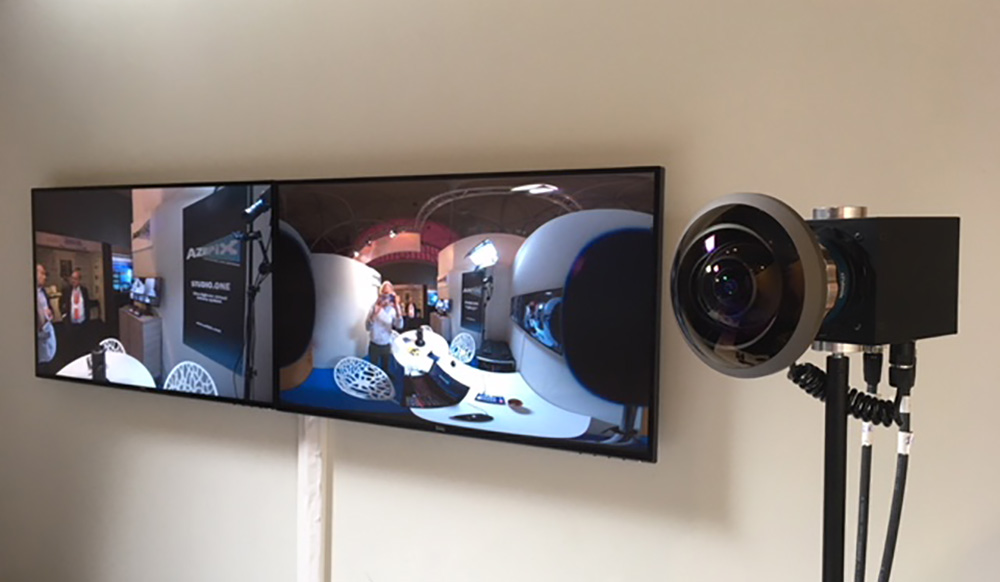
High-resolution camera and wide-angle fisheye lens expand the possibilities of VR
There are more and more cameras that can shoot in 8K.
The higher resolution of the camera does not only make the image more precise.
For example, it will be possible to crop images shot at 8K and crop them out as 4K or HD images.
High resolution allows us to think of new ways of expression and systems.
We can see a similar trend in the VR field.
Studio.One (AZilPix)
One such system is Studio.One, a video system that combines an 8K camera and VR (wide-angle fisheye video), developed by AZilPix, a company spun out of Hasselt University in Belgium.
Features of Studio.One
Studio.One combines an 8K camera with an ultra wide angle fisheye lens such as the Entaniya Fisheye HAL250 for live events and sports coverage.
Fisheye video shot at high resolution can be expanded to VR format and viewed as VR video, or you can select any location in the video and crop it to display it as normal video.
By specifying multiple crop locations and adjusting the crop size, a single camera can be used to create images similar to conventional switching/live switchers.
You can move and zoom the crop position and add movement such as pan and tilt. This system is capable of producing variable images even with a fixed camera.
This makes it possible to produce dynamic images with dramatically fewer cameras than with conventional methods.
Here’s a video showing a case where Studio.One was used in a hockey game broadcast.
Such a method was difficult to achieve with conventional FHD and 4K cameras due to their insufficient resolution, but with the advent of cameras capable of shooting at resolutions exceeding 8K, it is now possible to display cropped images with sufficient resolution.
Of course, something similar can be achieved using existing 360-degree cameras, but in the case of compound cameras, stitching is required before deployment in VR format. When the subject approaches the camera, the stitching will be broken. These processes can cause latency issues in real-time live streaming.
High resolution camera and wide angle fisheye lens
These problems can be solved by using a simple one-camera system with a wide-angle fisheye lens.
You can hide inconvenient scenes with cropping.
In 360-degree video, there is a problem that even things that are inconvenient to show are sometimes shown because they are visible in all directions. For example, there are many things in the video that you don’t want to show, such as the cameraman filming.
One is that it is possible to remove the inconvenient parts from the crop and discard them.
Example of deployment in Studio.
A sample of the deployment using Studio.One has been published and is posted here.
The video above is the VR format video with cropping specified, and the video below is the video exported in HD.
Unfortunately, I don’t think this video was shot using the Entaniya Fisheye HAL250, but you can see how it allows for more variation in the video even with fewer cameras and a smaller crew.
